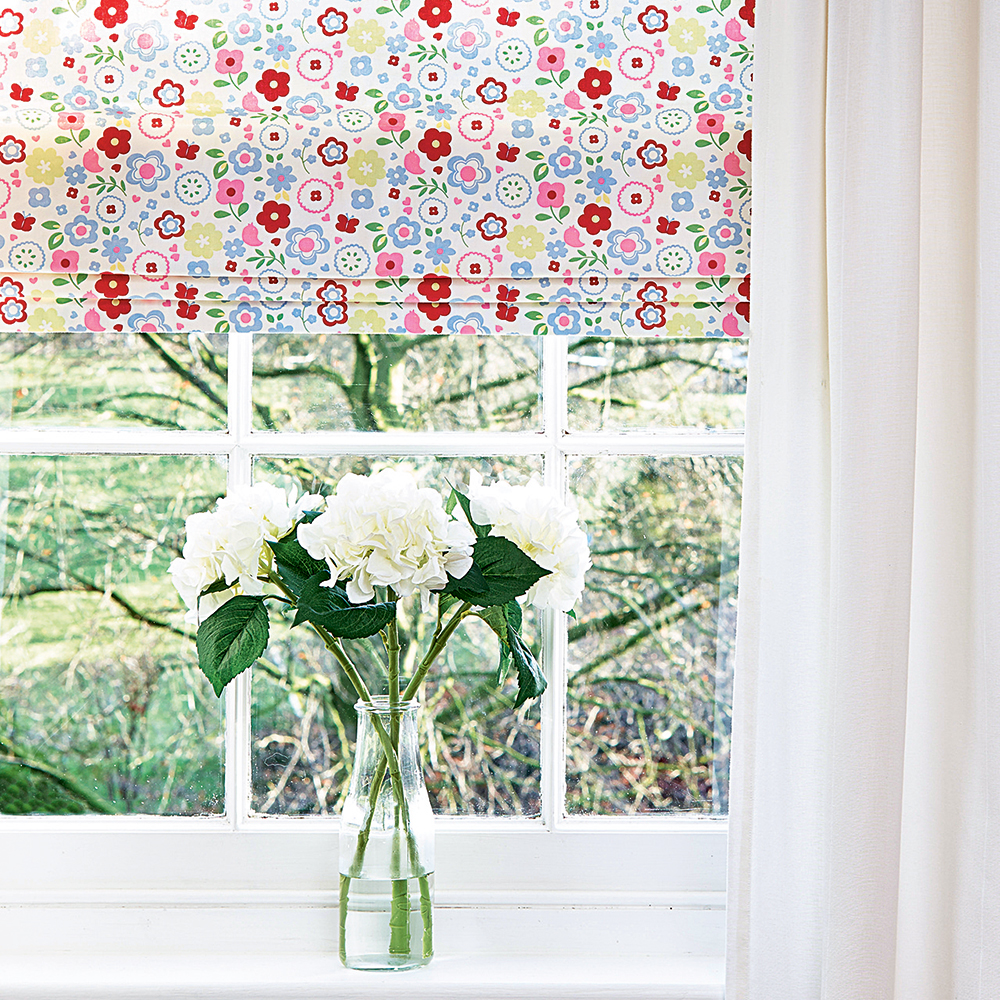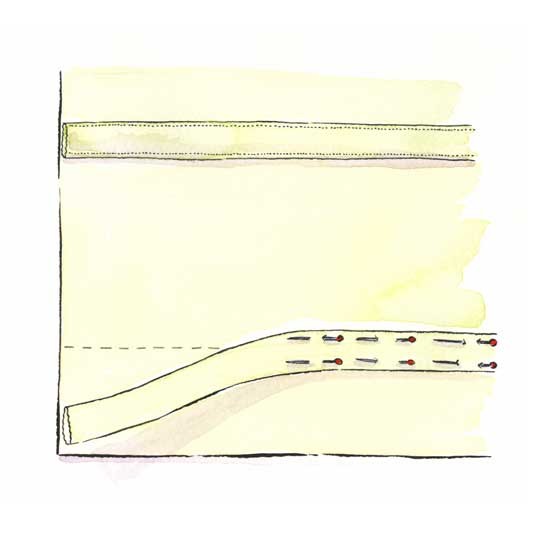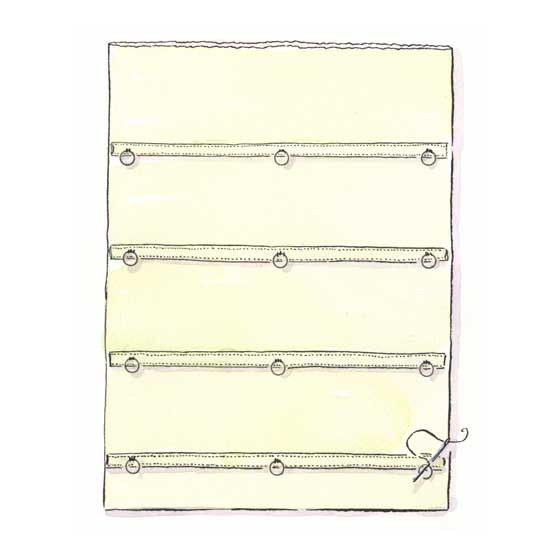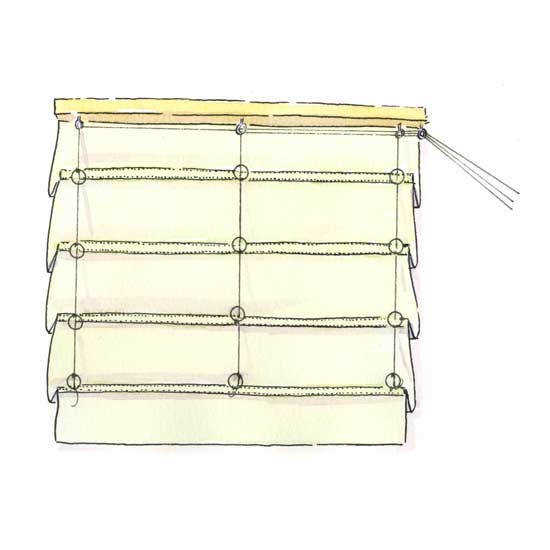How to make a Roman blind – an easy guide to making a practical window treatment
Choose the perfect fabric for your room, then follow our easy step-by-step instructions to make your own Roman blind for your window
A classic Roman blind is a simple but beautiful way to dress a window. Roman blinds offer a smart and highly-practical solution to blocking out the sun, while adding colour and pattern to dress windows – a great way to enhance stylish curtain ideas.
The difference between a roller blind and a Roman blind is the method in which it opens. Unlike a roller blind, which as the name would suggests rolls down, a Roman blind gently folds down layer by layer. The design is stacked rather than rolled, which offers a more polished finish with the blind is raised. Our design uses lining fabric, rings, eyelets and dowelling for a neat, professional look.
See our step-by-step guide to make your own Roman blind, to dress any window in any room.
How to make a Roman Blind

Note: Before you embark on your blind project, take a look at the latest rules and regulations on blind safety. Visit makeitsafe.org.uk for up-to-date information
What you will need
- 2.5cm-square wooden batten the width of the blind
- Length of self-adhesive hook and sew-on lop fastener the width of the batten
- Main fabric
- Lining fabric
- Matching thread
- Lengths of narrow wooden dowelling, the width of the finished blind minus 3cm
- Decorative trim or braid (optional)
- 12mm plastic rings
- 4 screw-in eyelets
- Wooden blind pull, painted if preferred
- 3 lengths of cord, each the width of the finished blind plus twice the length
- Wall cleat
Not sure how to measure up? See our video how to measure Roman blinds
1. Fix your blind's supporting structure
Attach the batten above the window frame and press the self-adhesive hook fastener along the front of the batten.
2. Work out the size of your blind
Measure from the top of the batten to your required finished drop, adding 2.5cm each for the top and bottom hems. For the width, measure the length of the batten and add 2.5cm for each side seam. Cut out your main and lining fabrics to these measurements.
3. Line your blind
Right side up, lay out your main fabric on a flat surface. Place the lining fabric on top, matching raw edges all round. Pin all round then stitch the side and bottom edges, taking a 2.5cm seam. Remove pins.
4. Create dowel pockets

Illustration by Michael A Hill
To create a dowel pocket along the bottom edge, stitch a second line of stitching 6mm from the raw edge. Insert dowel. Trim seam allowances and turn through and press.
5. Create the pleats
Lay the blind lining side up and measure 5cm from the top of the blind. Mark with a pencil line across the width of the blind. Divide the remaining length of the blind into 20cm to 30cm pleats, finishing with a half pleat at the bottom. Mark each section with a pencil mark as before.
6. Make pockets to hold the dowels at each of the pleats
Cut 8cm strips of lining fabric to the width of the blind for each of the marked pencil lines. Fold each strip in half along the length and stitch the long raw edge and one end, taking a 1cm seam. Turn through and press.

Illustration by Michael A Hill
Centre the pockets along the marked pencil lines and pin and tack in place. Machine stitch each long edge, through all thicknesses, being careful not to pucker the fabric.
8. Fix the dowels in place
Slide the dowels into the pockets, turning under the remaining raw edges on the pockets and slip stitching to hold dowels in position.
9. Add the plastic rings
On each pocket mark the centre point of the blind and slip stitch a plastic ring in place. Repeat 5cm in from each side edge of the blind on each pocket (see illustration).
10. Make the top hem
Turn the raw edges of the main fabric and lining fabric to the back of the blind by 2.5cm, press and tack. Stitch the sew-on loop fastener in place, close to the fold.
11. Trim your blind
Cut a length of decorative trim or braid to the width of the blind and slip stitch in place along the bottom edge. Hang the blind from the batten.
12. Attach the eyelets
Screw three eyelets to the underside of the batten so that each aligns with each row of plastic rings on the blind. Screw a fourth eyelet to the edge of the batten where the cords will fall and where the blind will be operated from.
13. Attach and tighten the cords

Illustration by Michael A Hill
Tie each length of cord to each of the three rings on the lowest pleat. Then thread each length of cord through each of the rings above it, and through the eyelets, finishing on the working side of the batten. Trim the cords to a suitable length and attach the blind pull (painted in a complementary colour if you prefer). Fix a cleat in place on the wall and use to secure the cords.
If you're looking get crafty, why not start now with our step-by-step guide to transforming your windows?
Get the Ideal Home Newsletter
Sign up to our newsletter for style and decor inspiration, house makeovers, project advice and more.
-
 Should your front door colour match your hallway? Interior experts reveal 3 reasons why it should (and 3 reasons it shouldn't)
Should your front door colour match your hallway? Interior experts reveal 3 reasons why it should (and 3 reasons it shouldn't)Are you team matching or contrasting?
By Ellis Cochrane
-
 This £200 limited-time discount makes this Dyson vacuum cheaper than I’ve ever seen it - run don’t walk to Argos for this bargain
This £200 limited-time discount makes this Dyson vacuum cheaper than I’ve ever seen it - run don’t walk to Argos for this bargainIt's the most affordable Dyson on the market right now
By Lauren Bradbury
-
 Martin and Shirlie Kemp’s pastel flower beds has given their Victorian renovation a romantic look - how you can get the look
Martin and Shirlie Kemp’s pastel flower beds has given their Victorian renovation a romantic look - how you can get the lookTheir pastel garden is the cottage garden inspo you've been looking for
By Kezia Reynolds